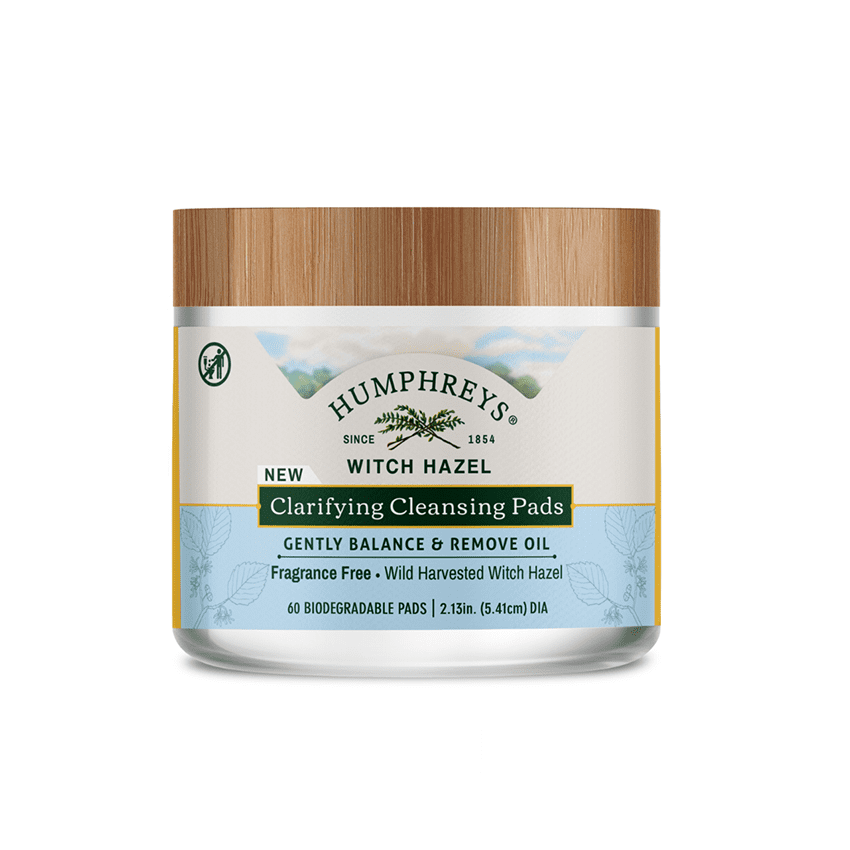Witch Hazel Is in Its Comeback Era — Here's How to Use It the Right Way

If there were a monarchy within the world of ingredients, witch hazel would be the longest-reigning sovereign. Sure, some trendier, newer ingredients have tried to take the throne, but let’s face it: witch hazel can do the job without all of the fuss. And it’s true, witch hazel can be a catch-all solution to many concerns — and has been for years — but it’s within the beauty industry that the blooming shrub has been subjected to debate. But we’re in the year 2022 and, these days, what’s old is new and witch hazel is officially in its comeback era.
To be fair, some ingredients rightfully deserve their infamous reputations, but witch hazel isn’t one of them — there’s a reason it’s stood the test of time. And even if you’ve been formerly acquainted with the ingredient, a refresher is in order. Ahead, we break down everything you need to know about witch hazel — its benefits, how to find exactly which witch-hazel product is right for you, and how it can fit into your unique routine.
What Is Witch Hazel?
Witch hazel, or hamamelis virginiana, is a flowering shrub native to North America. Although you’ve likely never seen it in its natural form, you have probably noticed it bottled up near the bandage and gauze shelves of your local drugstore — or, more likely, residing in the skin-care aisle. Before it became a hot topic among skin-care enthusiasts, witch hazel was used for medicinal purposes by Indigenous people of New England.
When extracted and distilled, witch hazel can be safely used for a range of skin concerns, but it’s most commonly used to help soothe redness, reduce excess sebum and oil, relieve burns, and, thanks to its antiseptic properties, help heal minor wounds.
How Is Witch-Hazel Extract Made?
Humphreys — a centuries-old line of witch hazel toners — wild harvests witch hazel from its natural habitat, the forests of New England. There, the plants have to survive through all sorts of natural conditions, building resilience as its bark and twigs mature, so it creates the most potent, nutrient-dense wild-harvested witch hazel, the kind that Humphreys believes reaches its full skin-healing potential.
The United States Pharmacopeia (USP) specifies that proper witch hazel, or genuine witch hazel, is distilled from the bark and twigs of mature, dormant plants. Although it’s not required for cosmetics to align with USP standards, Humphreys ensures that its wild-harvested witch hazel is distilled — using steam, not alcohol — to refine the ingredient, leaving behind the purest, most effective components.

How Does Witch Hazel Benefit the Skin?
Witch hazel can be found in skin-care products, like cleansers and lotions, but is more popularly used in toners. Because of its astringent properties, witch hazel is largely associated with reducing excess oil on the skin, meaning it may be helpful for anyone struggling with chronically shiny T-zones or the appearance of enlarged pores. Witch hazel can also help soothe redness and irritation, which can be helpful in addressing acne.
But isn’t witch hazel drying and irritating to skin? Humphreys’s proprietary distillation method helps to stamp out this accusation. Humphreys opts for steam to purify its wild-harvested witch hazel to remove impurities, like tannic acid (a component of witch hazel that can cause irritation to the skin). Once the distillation process is over, Humphreys uses natural grain alcohol but only as a preservative and in the USP-defined amount of 14 percent. To be clear, when not diluted and in high concentrations, synthetic alcohol can be drying to the skin. In the case of Humphreys and its natural grain alcohol in low percentage, the distilled witch hazel itself is the hero ingredient. The result: a gentle, nondrying formula that can be used daily.
With that said, people with very sensitive skin may like to avoid alcohol altogether. Luckily, alcohol-free toners exist. For example, Humphreys Nourish: Witch Hazel + Aloe Alcohol-Free Toner uses wild-harvested witch hazel with aloe to help soothe, tone, and nourish skin.
How to Use Witch Hazel
First patch test the product to make sure it is compatible with your skin. Then, decide what you want to use witch hazel for. Do you have oily skin and need to eliminate sebum in your pores? Do you have a community of blackheads on your nose? Do you have a breakout to control? If you have oily or combination skin, you might consider using witch hazel on a regular basis. Products like the Humphreys Soothe & Clarify: Witch Hazel + Rose Organic Toner and Humphreys Clarify: Pure Witch Hazel Organic Toner can repel oil and dirt quickly and are still gentle enough for daily use.
If you have dry or sensitized skin, you may want to use witch hazel products that are even more gentle on your particular area of concern (i.e., blemishes or inflammation). Presoaked pads like the Humphreys Clarifying Cleansing Pads can be helpful for spot treating or if you need quick, all-over coverage. Either way, witch hazel is best used after cleansing to prime your skin for moisturizer or whatever you apply next.
Shop the Article
-
Humphreys Nourish: Witch Hazel + Aloe Alcohol-Free Toner
$11
from target.comBuy Now
Humphreys Soothe & Clarify: Witch Hazel + Rose Organic Toner
$11
from amazon.comBuy Now
Humphreys Clarify: Pure Witch Hazel Organic Toner
$11
from amazon.comBuy Now
-
Humphreys Clarifying Cleansing Pads
$9
from walmart.comBuy Now
Source: Read Full Article



